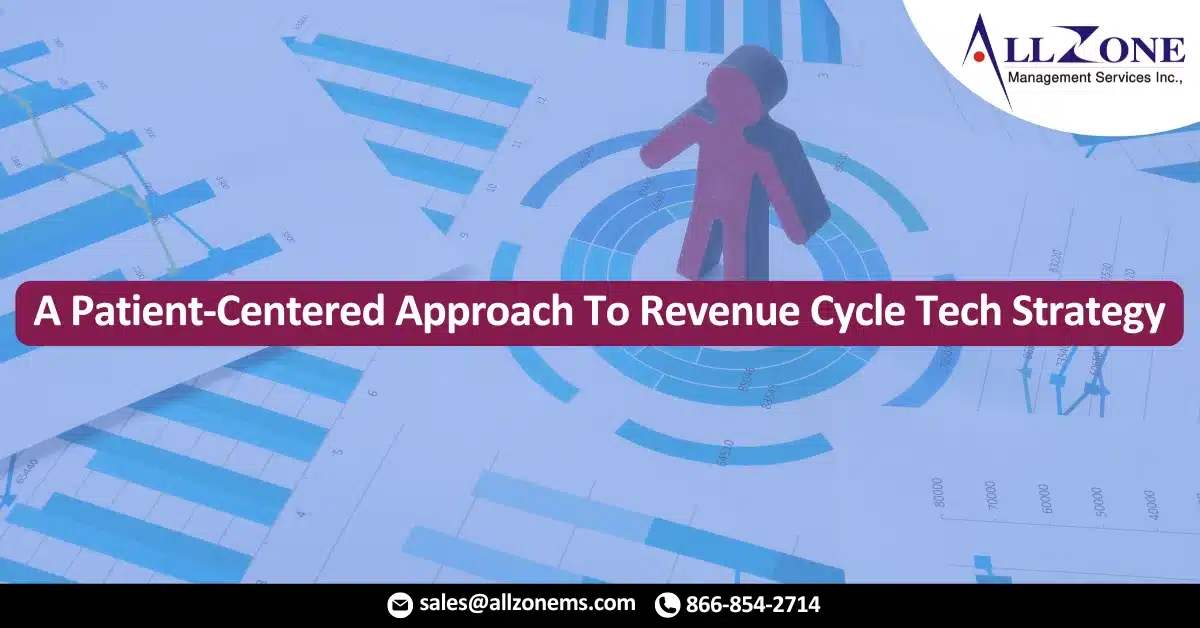A strategic approach to patient-centered revenue cycle technology strategy should be enabled by predictive analytics and machine learning to help customize the payment experience, refine communication messages, and give proper feedback to continually improve back-end processes.
The path to financial health for hospitals and health systems has shifted and is rematerializing in a way that might be unfamiliar to most of the industry. A patient-centered approach to revenue cycle technology is more than a smart strategy; it will soon be the only viable option for providers.
The days when insurance companies shouldered 90 percent of claim reimbursement have passed. Today, two-thirds of Americans are afraid they will receive a surprise medical bill, according to a 2018 Kaiser Family Foundation poll.
Patients are now both consumers and payers and, because of this shift, bring with them the expectations they have of other service providers. The consumerization of healthcare is in full swing and comes at a time when billing, coding, and healthcare technology are becoming exponentially more complex.
Technology, of course, is a powerful ally in navigating these changes, but realizing the full benefit of a technology investment requires a strategic approach that aligns with the shift toward a patient-centered revenue cycle technology. While most revenue cycle technology in the past have been focused on hospitals and health systems, a patient-centered perspective is rooted in the strategic application of three familiar tech elements that facilitate and enhance the patient experience.
Electronic Payments
Payment options might not be central to your team’s perspective on the revenue cycle, but the opposite is true for patients. Patients are accustomed to having a range of payment options for their purchases, including debit cards, credit cards, flexible payment plans, and even mobile wallets and wearable options. While you might not want to let your patients pay via PayPal just yet, it is important to understand their perspective and preferences.
Often due to speed and security, patients prefer electronic payment options. Integrated payment solutions customized to the hospital revenue cycle environment are foundational to a strategy that prioritizes patient expectations.
Strategic Communications
If you’ve paid attention to your personal POS transactions lately, you’ve probably noticed that businesses are making extra effort to collect email addresses, mailing addresses, and phone numbers to maintain communication with you as a consumer. Between newsletters, text messages, chatbots, and personalized buying suggestions, communication has become a 360-degree, tech-enabled experience.
This level of personalization, automation, and real-time communication only happens with the help of technology and analytics that are strategically aligned with patient expectations of their healthcare experience. It’s difficult to overestimate just how integral communications are to the patient experience — an InstaMed survey found that 47 percent of consumers would change providers just for a better understanding of costs at scheduling and the ability to pay a bill using their preferred method.
Patient Financial Engagement Workflows
A patient-centered revenue cycle technology requires transparency, and transparency means your back-end processes need to be as clean and efficient as possible. The age of painstaking, repetitive, manual processes has passed — according to Black Book’s 2017 Revenue Cycle Management survey, a full 92 percent of hospitals and health systems have plans to drop manual back-office billing processes by the end of this year.
Upgrading those manual processes is a question of tech strategy, and the vast majority of providers are headed in the same direction. The same Black Book survey revealed 83 percent of respondents’ plans for process replacement include prioritizing technology as an answer to increased consumerism to help patients manage, anticipate, and track their costs of care.
It All Comes Down To Data
It’s easy to look at the recent evolution of revenue cycle as just another change, but it’s important to understand the root of the change. Healthcare leaders are navigating the simultaneous acceleration of consumer expectations and technological development over time. Keeping pace with the speed of this evolution will require optimal use of the massive amounts of data and information patients are feeding healthcare organizations every day.
A strategic approach to patient-centered revenue cycle technology should be enabled by predictive analytics and machine learning to help customize the payment experience, refine communication messages, and give proper feedback to continually improve back-end processes. While it’s possible to catch up to today’s revenue cycle demands, staying on top of fast-evolving options like mobile apps with intuitive navigation and flexible payment solutions that encourage self-service, keeping up at the required pace won’t be possible without the aid of AI solutions that are designed to solve your problems as they evolve.
Walking into the future of revenue cycle without a tech strategy is a gamble. We have many questions to answer as we settle into the new world of patient-centered financial experiences. Getting past the assumptions and habits of yesterday will take leadership with a clear vision of technology’s role in facilitating positive relationships between providers and patients as part of the revenue cycle experience.
For More Information: https://medcitynews.com/2019/06/a-patient-centered-approach-to-revenue-cycle-tech-strategy/

